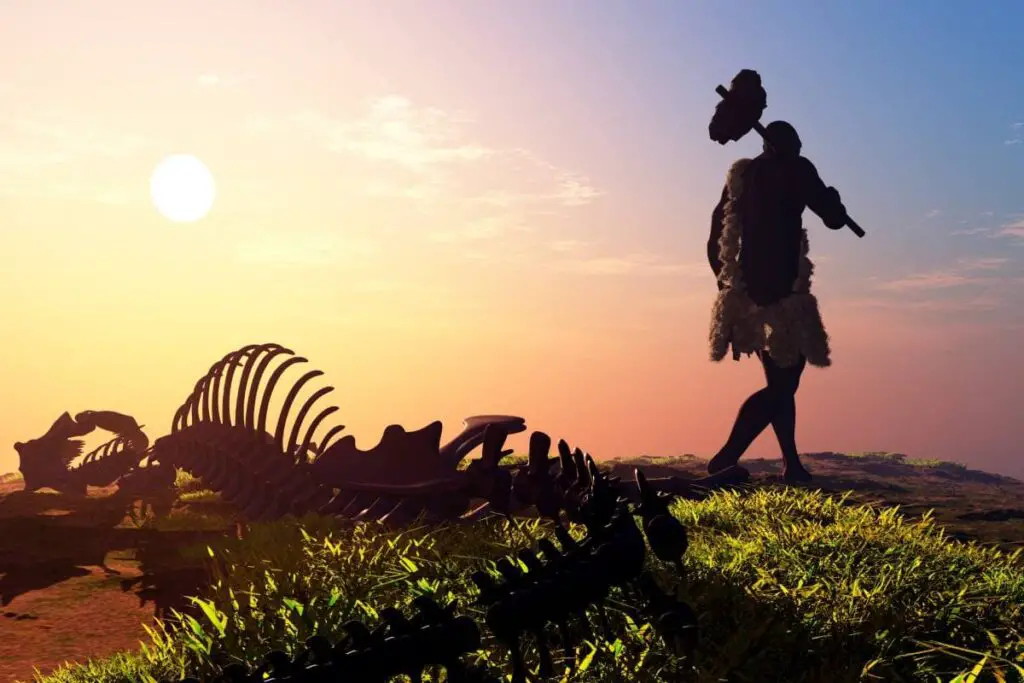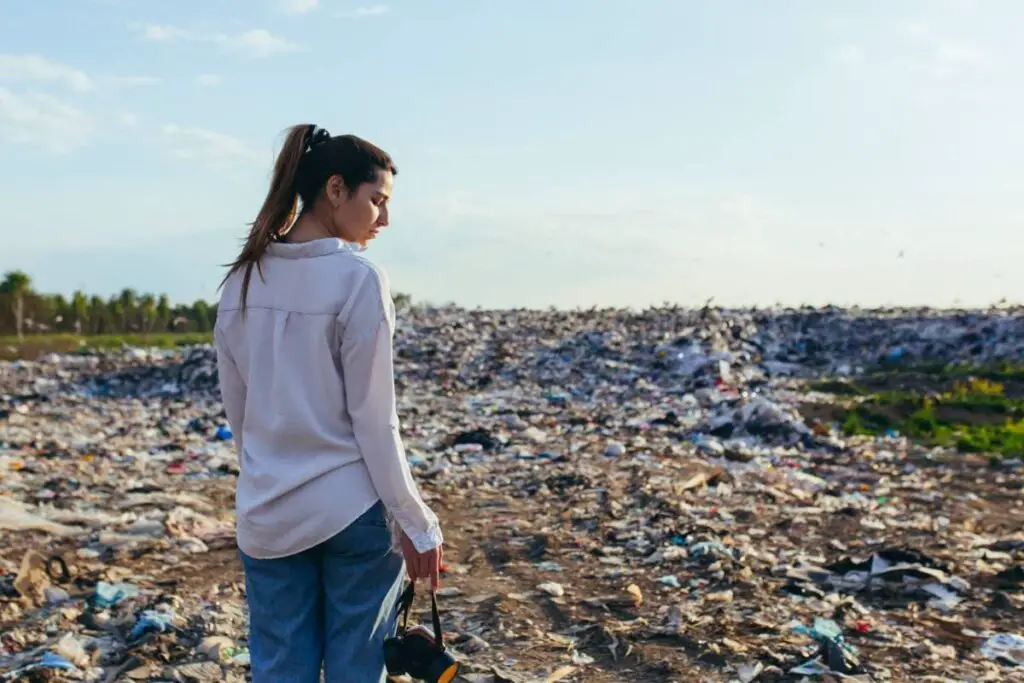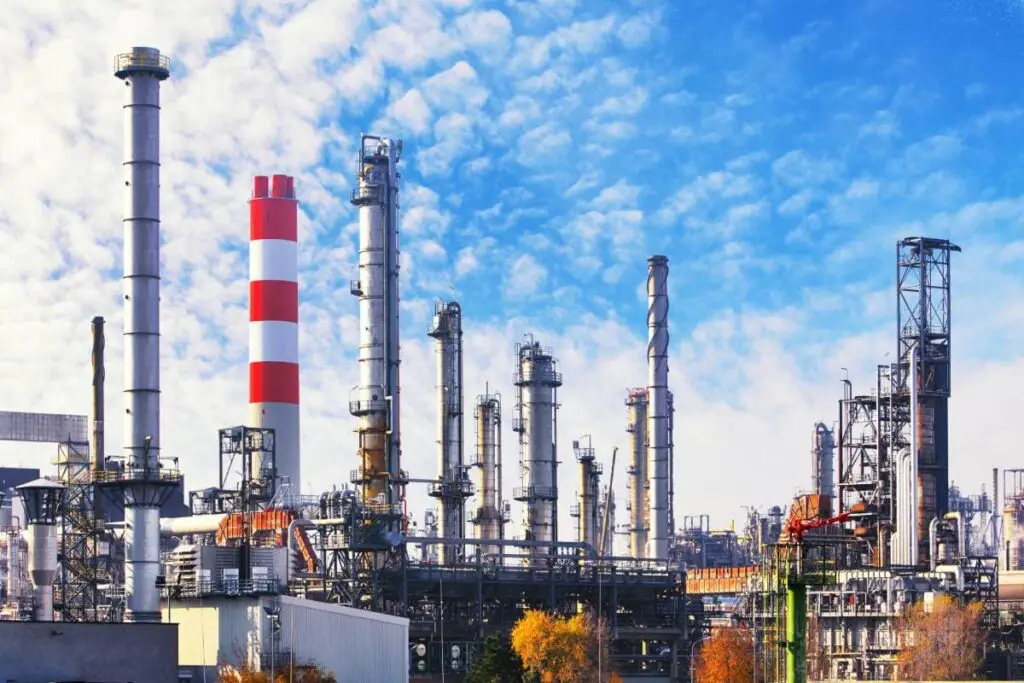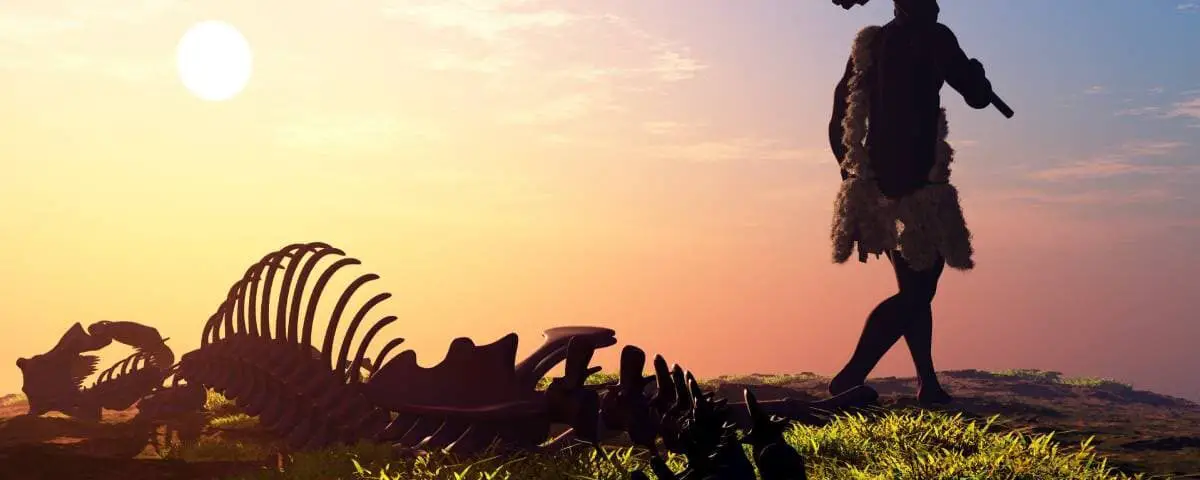Since the shift from nomadic hunter-gatherers to agrarian living, humankind has significantly altered the world around it. As a result, the alterations have dramatically changed the planet’s ecosystems, weather, flora, and fauna.
Man and the history of the environment are inextricably linked. Humankind’s impact on its surrounding environment predates written records, but it has become more extreme within the last few centuries. The environment’s history shows the relationship between humanity and nature.
Environmental history as a field of study highlights the effect of man’s interaction with nature. It also includes the impact of natural disasters on human populations and innovation.

What Is Environmental History?
Studies of the environment (ecology) date back to ancient times, but environmental history is a much newer field. For this reason, many outside the academic realm (particularly the study of natural sciences) are unfamiliar with environmental history.
However, Dr. Franz Brüggemeier sums up the study of environmental history succinctly.
In the International Encyclopaedia of the Social & Behavioural Sciences, he states, Environmental History deals with the history of human impacts on nature and the interactions between humans and nature.
Dr. Franz Brüggemeier (Albert Ludwig University of Freiburg)
Environmental history is essentially the study of man’s influence over the history of the environment. It covers:
- Prehistoric impacts of humankind on its surrounding environment
- The effect of sociological shifts on the environment
- How natural events and environmental changes affect humanity
For a more comprehensive explanation of environmental history and its major topics, it is worth taking 10 minutes to watch this educational video:
Factors Contributing to Anthropogenic Environmental Changes
Many people believe that anthropogenic environmental changes caused by humans, are symptoms of modern civilisation. Yet, archaeological and anthropological evidence contradicts this popular belief.

Humanity’s basic needs haven’t changed much since the first African Exodus (between 75,000 and 100,000 years ago).
These essential needs form the base layer of Maslow’s Hierarchy of Needs. They include:
- Food
- Water
- Oxygen
- Shelter
Our natural environment satisfies many of these needs, especially when human populations remain small and transient. In this way, man and the history of the environment are inextricably linked. And therefore Man’s emergence and survival depend on the environment.
What happens to the environment when populations grow?
However, the environment becomes an unsuitable provider when populations exceed local resource supply limits. Consequently, unregulated population growth is the first factor contributing to anthropogenic environmental changes.
Faced with dwindling resources and growing communities, many of our earliest ancestors struggled to survive. But those who did survive utilised adaptive survival strategies, an early progenitor of what would later become human innovation.
The Pros and Cons of Tools
Creating tools to overcome environmental challenges was a positive move which helped our earliest ancestors survive. But there was a negative secondary effect.
Tools made by humans became one of the first major deviations which distinguished people from animals. And it was those tools that challenged and disrupted the natural order.
Though it was negligible at first, tools eventually evolved into complex technological innovations.
The complexity of advanced tools has been responsible in part for the massive environmental transformations that have taken place during the last several millennia.
Notable Moments in the Environmental History Timeline
Using a timeline is a great way to understand the evolving relationship between humanity and the environment. So, let’s consider the most impactful moments throughout the history of the environment.
Genetic Bottlenecks – 70,000 BCE
Genetic diversity is crucial to the long-term survival of any species. However, human beings aren’t nearly as genetically diverse as other species.
That’s because our species experienced multiple genetic bottlenecks throughout prehistoric times.
A genetic bottleneck occurs when the bulk of a population dies off, leaving only a small percentage to repopulate. The descendants of the remaining population lacked genetic variation, resulting in a relatively homogeneous species.
The precise causes of these bottlenecks remain a mystery. However, genetic testing reveals that it is likely some of them occurred after the first groups of hominids left Africa. The migration is believed to be a consequence of climate change.
As a result, Palaeolithic genetic bottlenecks within the human species are some of the environment’s first significant and long-term impacts on humankind.
Despite multiple population culls, early humans repopulated and spread across the globe. One of the best ways to understand the rate and spread of this growth is to use visual simulations.
This 20 minute video is one of the most detailed, easy-to-understand examples:
For more than 50,000 years, ancient peoples maintained a nomadic lifestyle, hunting, and foraging for food. The inevitable changes that followed drastically altered the future of the human species and its environment.
The Neolithic Revolution – 10,000 BCE
The Neolithic Revolution, also called the Agricultural Revolution, changed the history of the environment forever.
Before this point in time, early humans lived nomadic lifestyles, rarely settling in shared locations for more than a few seasons. Our ancient ancestors hunted and foraged for their meals, which is why we call them hunter-gatherers.
When animals and edible plants became scarce in an area, people packed their sparse belongings and travelled to lands with more abundant resources.
What happened around 10,000 BCE
Early humans, through desperation or realisation, began planting seeds and growing crops.
The first human growers became stationary and communities sprouted up around their pre-historic farms. This resulted in a new and more comfortable lifestyle. Initially, the change had little effect on the environment.
However, one effect of the switch, from nomadic hunter-gatherers to stationary farmers, was a steady increase in population. More people meant Neolithic communities were forced to make dramatic changes to their environment.
Deforestation of Ghab Valley – 7000 BCE
After a few thousand years of settled living, populations began to exceed their resource limits. Previously, this would have resulted in starvation and death.
But Neolithic humans knew how to till soil and plant crops. Their answer to the issue of a rapidly growing population with a dwindling food supply, was to increase crop output.
Even so, they could only grow so many plants on a single plot.
For this reason, humans living in the Ghab Valley, Syria, began harvesting lumber en masse, resulting in the first recorded anthropogenic deforestation event in history. This event was one of the most ominous and significant signs of humankind’s impact on the environment.
The fertile land left exposed after the harvest was converted into arable farmland. It provided the food needed to support a growing population of increasingly advanced humans.
Anthropogenic Animal Hybridisation – 2500 BCE
Until 2500 BCE, humankind’s relationship with life-sustaining resources was simple.
Man had achieved minimal control of the environment by domesticating livestock animals and wild plants. He also harvested wild resources like timber, potable water, and surface-level minerals.
However, 2500 BCE our ancestors devised animal hybridisation, and with it they found a new way to control the environment. They began by breeding domesticated donkeys with closely-related wild asses.
Salinification of Mesopotamia – 2100 BCE
The first Mesopotamian cities appeared around 4000 BCE, but the largest and most extravagant was Uruk. The estimated maximum population of the city was 80,000 inhabitants.
However, feeding the population was challenging.
Uruk was positioned between two life-giving rivers, the Tigris and Euphrates. The river basin was rich in freshwater marshes, making it an ideal area for irrigation.
But freshwater sources dwindled as the city’s population rose. To combat this, the Mesopotamians dug small channels leading from the banks of the Euphrates to the land surrounding Uruk.
These hand-carved canals allowed the waters of the nearby Euphrates to form an elaborate irrigation system. However, the ancient Euphrates was highly saline, and this change led to another crucial moment in the history of the environment.
When the ancient Mesopotamians redirected the rivers to create irrigation systems, they inadvertently trapped much of the salt within the soil around Uruk.
As the city’s population grew, the percentage of land designated for agriculture increased. The doomed irrigation system expanded alongside it.
Within a span of approximately 2,000 years, the once fertile soil keeping Uruk afloat transformed into salt-rich dunes. To this day, the site of the first major city is a pottery-filled wasteland devoid of plant life and freshwater.
Silphium Extinction – 200 BCE
By 200 BCE, the Roman Empire had conquered much of Italy and established itself as a powerful civilisation. Unfortunately, the rapid growth of the Roman Empire had significant environmental consequences.
One of the most infamous consequences was the extinction of silphium, a flowering plant beloved by the ancient Romans. Unlike domesticated crops, silphium failed to thrive outside a specific area in North Africa.
Due to its exceptional popularity, it was overharvested to the point of extinction. Sadly, this anthropogenic extinction event wasn’t the last.
Little Ice Age – 1300 to 1850 ADE
Multiple human civilisations were negatively impacted by a brief spate of volcanic eruptions between 536 and 547 ADE. These eruptions resulted in lost crops and an extended period of unusually cold weather.
However, these unusual natural events pale in comparison to the Little Ice Age, one of the most impactful incidents in the history of the environment. This era is one of the most significant in terms of its effect on human culture.
Prompted by four volcanic eruptions, which occurred within a 50-year period, the Little Age Ice ushered in centuries of harsh, cold weather that decimated crops and led to widespread famine.
Before the Little Ice Age ended in 1850, humankind would initiate yet another change that would alter the planet’s landscape—the Industrial Revolution.
The Industrial Revolution – 1780 ADE
The Industrial Revolution may be the most significant shared event in human and environmental history. This new industrial age introduced mass-produced products, factories, and combustion engines.

Automobiles and other modern wonders weren’t far behind.
With the sudden uptick in commercial and industrial opportunities, came a jump in urban populations and a decrease in rural ones. However, this period’s most impactful effect on the environment was a dramatic increase in the use of fossil fuel.
More than a century later, we are still reliant on these non-renewable sources of energy. As a result, it’s safe to say that the Industrial Revolution heralded the beginning of modern environmental history.
Modern and Postmodern Environmental History: Major Disasters
Humankind’s impact on the environment intensified after the Industrial Revolution, accelerating at a rate never seen before.
Much like the expansion of the universe, environmental changes have increased exponentially since the late 18th century. As a result, we’ve experienced a rapidly increasing pace of anthropogenic disasters throughout the modern and postmodern eras.
This chart offers a brief chronological look at some of the most impactful of these comparatively recent environmental calamities.
| Event Name | Location | Year | Causes | Effects | Response |
| The Great Stink | London, England | 1858 | Human waste and pollution in the River Thames | Cholera outbreak | The advent of a widespread subterranean sewage system |
| The Dust Bowl | Great Plains Region, United States | 1930 to 1940 | Flawed agricultural practices and recurrent droughts | Soil erosion, food shortages, famine | Improved agricultural practices and increased rainfall |
| Love Canal Disaster | New York, United States | 1942 to 2004 | Industrial chemical waste buried beneath the soil | Widespread health problems among those living above the dumping ground | Restricted access to the contaminated area, soil removal, and water treatment |
| Great Smog of London | London, England | 1952 | Excessive coal and chimney smoke | Poor visibility, increased respiratory illness and asthma | Legislative changes, including the Clean Air Act of 1956 |
| Four Pests Campaign | China | 1958 to 1962 | Mao Zedong’s concerns about public hygiene and disease | Near-extinction of tree sparrow populations within China, the Great Famine | Government termination of the campaign |
| Centralia Mine Fire | Pennsylvania, United States | 1962 | An accidental fire within the Centralia coal mine | Respiratory distress, collapsed ground, death of local plants and animals, carbon monoxide pollution | Resident relocation, several unsuccessful attempts to extinguish the mine fire |
| Seveso Disaster | Meda, Italy | 1976 | Mechanical failure at chemical plant | Death of more than 3,000 animals, long-term environmental contamination | Evacuation of local residents, slaughter of affected livestock, restricted access to affected area |
| Three Mile Island Incident | Pennsylvania, United States | 1979 | Mechanical and human errors at the Three Mile Island Nuclear Generating Station | Exposure to increased levels of radiation | Resident evacuation, changes to plant operation and emergency response procedures |
| Chernobyl Disaster | Pripyat, Ukraine | 1986 | Nuclear reactor explosion resulting from faulty equipment | Human deaths, widespread environmental contamination, increased radiation-related illnesses throughout Europe | Installation of concrete sarcophagus (Shelter Structure) trapping large percentages of radiation, restricted access to affected areas |
| Exxon Valdez Oil Spill | Alaska, United States | 1989 | Oil tanker impact with coral reef, resulting in oil spillage into Prince William Sound | Premature death of thousands of marine animals and seabirds | Clean-up efforts, changes in oil tanker ship design and construction |
| Jilin Chemical Plant Explosions | Jilin Province, China | 2005 | Mechanical and human error | Pollution of surrounding environment, including the Songhua River, increased rate of leukaemia in the affected area | Clean-up efforts backed by government agencies |
| Fukushima Nuclear Disaster | Fukushima, Japan | 2011 | Lost power due to earthquake | Widespread environmental contamination due to release of airborne radioactive material | Mass resident evacuations, dumping of radioactive wastewater into Pacific Ocean |
| Great Pacific Garbage Patch | Pacific Ocean | Ongoing | Improperly discarded trash guided by tidal currents | An increase in premature marine animal death, release of microplastics throughout world’s oceans | International clean-up efforts and organisations like; The Ocean Cleanup |
| The Gulf of Mexico Dead Zone | Gulf of Mexico | Ongoing | Groundwater pollution stemming from excessive fertiliser use and industrial runoff | Decreased population of sea life, including fish, crustaceans, and seaweed | The creation of the Mississippi River Gulf of Mexico Watershed Nutrient Task Force |
| Flint Water Crisis | Michigan, United States | Ongoing | Polluted local water sources | Increased exposure to lead | Federal aid and improved water treatment facilities |
How Environmental History Impacts Humanity
Natural and anthropogenic environmental changes have and will continue to shape the course of human history.
Without the threats to human survival posed by the environment, humankind might have remained technologically undeveloped. Additionally, environmental transformations can cause civilisations to crumble or rise, significantly influencing human history and culture.
However, environmental history’s impact extends beyond the past and present; it also affects our future.
Unless humanity colonises other planets, Earth will remain our only home. Therefore, humankind’s survival depends on natural resources harvested from the environment.
Environmental changes impacting these resources could prove disastrous, resulting in the extinction of most of the planet’s living organisms.
In short, understanding the relationship between man and the history of the environment is crucial to delaying or preventing humankind’s extinction.
Final Thoughts
Environmental history combines multiple fields, including anthropology, sociology, and ecology. This field of study focuses on the symbiotic relationship between humanity and the natural world.
Common topics related to the field include the impact of human civilisation on the environment and the influence of environmental changes on human populations, cultures, and technological innovations.

